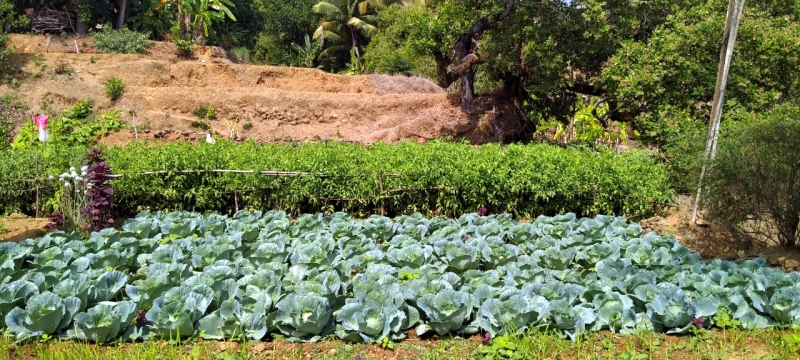... way to go for veggie self-sufficiency

PANAJI
Vegetable farming, particularly in the post-monsoon rabi (winter) season, is a crucial component of Goa's agricultural landscape. In recent years, especially during and after the Covid-19 pandemic, it has significantly expanded both in terms of net production and livelihoods added.
Nonetheless, Goa remains a grossly vegetables deficit State depending largely on imports from neighbouring areas of Karnataka and Maharashtra for much of the greens in the daily diets of Goans.
Agriculture Department data estimates approximately 7,500 hectares as covered by vegetable farming focussed primarily on tropical varieties which are suited to local climatic and soil conditions. The net production is pegged at 65,000 tonnes and meets only a meagre portion of the State's demand.
The gap between local production and the demand is colossal. A recent publication of the department estimates Goa's vegetable demand to be approximately 1.5 lakh tonnes, both of the domestic population as well as tourists, which is nearly two-and-half times of what is produced in the State.
Agriculture Director Sandeep Fol Desai, however, was at pains to explain that significant progress has been made in increasing the coverage in farming of certain varieties of vegetables.
"We are making concerted efforts to increase vegetable growing by educating the farmers to diversify their crops and opt for some lucrative varieties of vegetables like okra (bhendi) which grows easily here," Fol Desai said.
He added that zonal agriculture officers (ZAOs) are constantly hand-holding farmers and advising them on improving farming practices and better management of problems like pest attacks and disease affecting their plantations.
He said both, Goa's climate as well as soil conditions, are very favorable for growing some tropical varieties of vegetables.
Okra (bhendi), cluster beans (chidki midki), bitter gourd (karatin), spinach (palak), cucumber (toushim), ridge gourd (ghosalli), eggplant (brinjal), chillies (mirsang), radish (mullo), knol khol (nabh) and cabbage (kobi) are some of the varieties which are being taken up for cultivation by Goa's farmers in recent years.
"The department provides incentives to farmers for vegetable cultivation and we are focussing on achieving self-sufficiency in some local varieties of vegetables since the last few years," he said.
"Gradually, the quantum of vegetable imports into Goa is decreasing due to the increase in local production," Fol Desai said but did not guess an estimate as to the extent to which the gap has closed in between the demand and local production.
Cucumber driving
green revolution
According to Farmers Federation Goa, a collective hand-held by NABARD, cucumber is one vegetable variety which is driving Goa's 'green revolution'.
Perhaps due to its quality in helping to keep the human body hydrated and eliminate toxins, demand is high especially during summer," said an official of the Federation, adding that it is a favourite choice to cultivate for farmers especially in the hinterland hilly-terrain areas of Sattari, Ponda, Sanguem, Quepem and Canacona.
Some farmers groups which cultivate cucumber rigorously according to him are the Kalpurush Farmers Club, the Ambaulim Farmers Club, Balaram Farmers Club, Bhumika Farmers Club, Shree Vetaleshwar Farmers Club and Sangod Shetkari Sanghatana.
"It's not the case that the story of cucumber farming is always rosy. There are times when adverse weather conditions affect yield and cause losses to the farmers. Another factor that affects farmers is lack of demand when cucumbers are harvested forcing some farmers to either sell their produce at throwaway prices or sometimes dump them," he said.
However, overall, cucumber cultivation in recent years has been an experience which has kindled hope rather than despair in Goa's struggling agriculture sector.